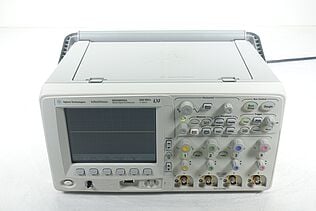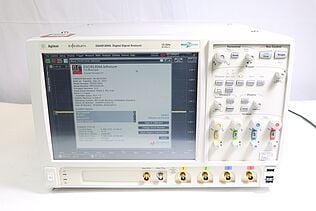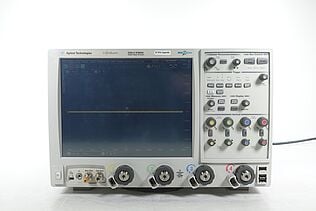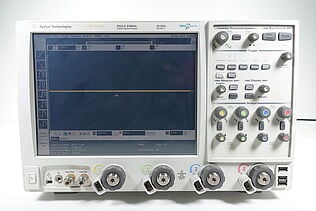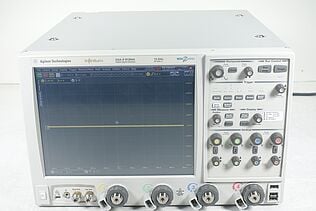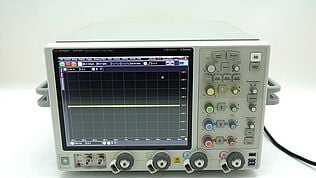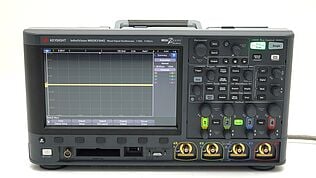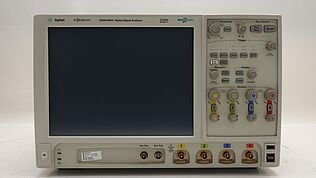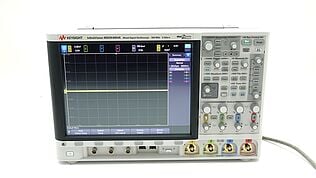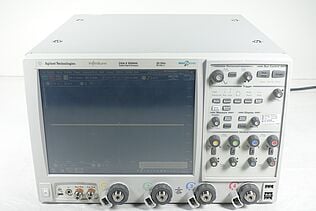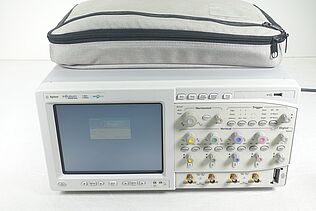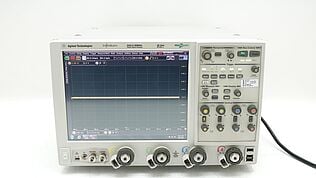- introduction
- Tight Deadline? Get Our Used Equipment With Faster Shipping!
- Understanding the Inverse Square Law in Electrical Engineering
- The Basics of the Inverse Square Law
- Practical Applications in Circuit Design
- Diving Deeper into Electromagnetic Fields
- The Role of Inverse Square Law in Circuit Design
- Component Spacing
- Oscilloscopes and Signal Integrity
- Actionable Takeaways: Applying Theory To Real-World Circuits
- Application of Inverse Square Law in Antenna Theory
- Understanding Antenna Gain and Effective Range
- Radiation Patterns: Not Just About Distance
- Inverse Square Law in Illumination Engineering
- Leveraging Tables for Practical Insight
- Navigating Lighting System Design Factors Influenced by Inverse Square Law
- Sound Propagation and the Inverse Square Law
- The Basics of Sound Diminishment
- Analyzing Sound Levels in Electrical Engineering
- Affecting Factors Beyond Distance Alone
- Safety Considerations Related to Inverse Square Law
- Understanding Radiation Exposure:
- Mitigating Risks in High-Intensity Fields
- Actionable Safety Measures Based on Inverse Square Law Principles
- Measuring Tools and Techniques for Inverse Square Law Applications
- Field Strength Meters: Capturing Electromagnetic Field Intensity
- Photometers: Shining Light on Illuminance Measurements
- The Right Analyzers for Comprehensive Testing
- Advanced Topics Related to Inverse Square Law
- Wireless Power Transfer (WPT)
- Near-Field Communication (NFC)
- Pivotal Considerations for Advanced Applications
- Get Our Used Equipment With Faster Shipping! Helping Engineers Worldwide Finish Projects With Excellence.
- FAQs in Relation to Inverse Square Law
- FAQs in Relation to Inverse Square Law
- How Does the Inverse Square Law Impact Battery Life in Wireless Devices?
- What Role Does the Inverse Square Law Play in Solar Panel Efficiency?
- Can the Inverse Square Law Be Applied to Soundproofing?
- How Does the Inverse Square Law Affect Heat Dissipation in Electronic Components?
- What is the Significance of the Inverse Square Law in Underwater Communication?
- Conclusion
- Whenever You’re Ready, Here Are 5 Ways We Can Help You
Have you ever wondered why the illumination in a vast auditorium or warehouse tends to vary drastically from one spot to another?
This common challenge in electrical engineering is a direct consequence of the inverse square law. It's a principle that illustrates how light intensity sharply decreases as you move away from the source, a critical factor in designing efficient lighting systems for large spaces.
The implications of the inverse square law extend far beyond lighting. Whether it's ensuring consistent signal strength in wireless networks or optimizing the safety and functionality of radiation shielding, this law is a fundamental aspect of electrical engineering.
As we look into its applications, we'll explore how it influences antenna performance, electronic system safety, and more.
In this guide, we’ll discuss the practical applications of the inverse square law, turning theoretical knowledge into tangible solutions in electrical engineering.
Tight Deadline? Get Our Used Equipment With Faster Shipping!
Understanding the Inverse Square Law in Electrical Engineering
If you've worked with anything from antennas to lighting systems, you've seen the inverse square law in action. It's like a shadow that gets fuzzier as it stretches out—intensity fades with distance. Signal intensity scales with the inverse of the distance:
\(Intensity ∝= \frac{1}{Distance^2} \)
This fundamental principle applies across many fields. For electrical engineers, it shapes how we design circuits and ensures safety when dealing with radiation exposure.
The Basics of the Inverse Square Law
Imagine tossing stones into a lake – the ripples grow less intense and eventually dissipate. This illustrates this physical concept that also applies to light emitted by LEDs or radio signals broadcasted by transmitters. The essence of this law is simple: double your distance from a source, and its impact on you drops by a factor of four. But why does this matter?
If you are measuring sound levels for an audio setup or adjusting antenna positions for optimal signal strength, understanding how intensity changes can make or break your project.
Practical Applications in Circuit Design
Circuit designers understand the critical relationship between component spacing and signal integrity, guided by the reliable inverse square principle.
Imagine a circuit board crowded with components placed too close together. This setup can lead to interference issues such as crosstalk or unwanted signals that disrupt clear communication.
On the other hand, placing them too far apart results in an unacceptable loss of signal.
Diving Deeper into Electromagnetic Fields
| Distance (m) | Magnetic Field Strength (Tesla) |
|---|---|
| 1 | 1x Intensity |
| 2 | 0.25x Intensity |
| 4 | 0.0625x Intensity |
Note: As shown above, every time we step back – doubling our previous position – field strength takes quite a hit.
| Key Takeaway |
|---|
| The inverse square law is pivotal in mastering circuit design and enhancing safety against radiation hazards. Understanding how the intensity of sound, light, or electromagnetic waves diminishes with distance, you can strategically place components for optimal performance and signal clarity, ensuring both the effectiveness and safety of your designs. |
The Role of Inverse Square Law in Circuit Design
When designing electrical circuits, the inverse square law is a valuable asset that affects how we contemplate component spacing and signal accuracy.
Component Spacing
In circuit design, placing components too close together can lead to crosstalk or unwanted coupling, significantly degrading your circuit's performance.
The inverse square law tells us that the intensity of an electromagnetic field around a source decreases proportionally with the square of the distance from its origin.
To minimize interference between components on your PCB, spreading them out reduces their respective fields as they move apart. Think about walking away from a loud party—the chatter becomes quieter the further away you get.
Oscilloscopes and Signal Integrity
When conducting measurements for testing purposes, it is essential to maintain signal integrity. Oscilloscopes are crucial tools that allow us to visualize electrical signals and make informed decisions about layouts based on empirical data rather than educated guesses.
We rely on accurate readings to know what’s happening within our circuits. When we understand how distances affect readings according to the inverse square law, we can place probes appropriately.
- Keep components spaced adequately—this minimizes crosstalk thanks to the inverse square law.
- Analyze field strength decay patterns over distance using oscilloscopes—to maintain optimal signal clarity.
- Select appropriate measurement points—close enough for accuracy but far enough for minimal interaction via electric or magnetic fields.
Actionable Takeaways: Applying Theory To Real-World Circuits
The real skill lies in applying theoretical concepts to practical scenarios. Here are some pragmatic strategies to effectively integrate this law into your circuit designs.
- If two active elements must be near each other due to space constraints, consider shielding strategies or alternative routing techniques.
- Dive deep into datasheets—not all parts are created equal regarding radiated emissions.
- Trial-and-error can be valuable; don’t hesitate to use tools like Keysights FieldFox handheld meters to verify designs beyond simulation models.
| Key Takeaway |
|---|
| Space out your circuit components to avoid crosstalk. In tight spots, get creative with shielding and rerouting; dive into datasheets and don't shy away from real-world testing to confirm your design's robustness. |
Application of Inverse Square Law in Antenna Theory
The inverse square law is an important concept in antenna theory. It shapes how we understand and predict the behavior of electromagnetic waves as they travel through space.
When you double the distance from an antenna, its power reduces to a quarter. This principle has practical implications beyond theoretical understanding, affecting tasks such as designing antennas and communication links.
Understanding Antenna Gain and Effective Range
In practical terms, the inverse square law deeply affects an antenna's gain—a measure of how well it can send or receive signals in a particular direction.
A high-gain antenna can focus energy more tightly, ensuring that your signal stays strong even over great distances.
But here’s where it gets interesting—higher gain doesn’t always mean better performance across all scenarios.
If you're broadcasting or receiving over long distances without much obstruction (like satellite communications), higher gain is king. However, when obstacles are present, or if you need broader coverage close by (think Wi-Fi routers), then lower gain with broader radiation patterns may be what you need.
Radiation Patterns: Not Just About Distance
Radiation patterns describe how antennas distribute their signal strength across different angles. And because of the inverse square law, these patterns tell us about reach and signal quality at various points within that reach.
An omnidirectional pattern evenly spreads out, like light from a bulb. It covers areas surrounding the antenna without worrying about range maximization.
Meanwhile, directional antennas act more like flashlights, focusing on specific directions, yielding longer ranges but requiring precise alignment toward receivers.
| Antenna Type | Ideal Use Case | Considerations Due to Inverse Square Law |
|---|---|---|
| Omnidirectional | Covering nearby regions equally well | Better for short-range broadcast/reception due to quick drop-off with distance |
| Directional High-Gain | Focusing on distant targets | Requires careful aiming due to focused beam narrowness – powerful yet limited spread |
| Directional Low-Gain | Broader nearfield coverage while maintaining some directivity | It strikes a moderate balance between range and the area it can cover, although signal strength may drop off over long distances. |
| Key Takeaway |
|---|
| The inverse square law's impact on antenna design shapes signal strength and quality, affecting everything from your Wi-Fi router's reach to satellite communications. A high-gain antenna may offer a focused beam for long distances, but sometimes you'll want a low-gain one for broader close-range coverage. |
Inverse Square Law in Illumination Engineering
Imagine you're shining a flashlight on the wall. As you walk away from the wall, the light becomes dimmer. That's the inverse square law at work—it tells us how light intensity decreases with distance.
This law states that illumination from a point source spreads out and reduces as it travels further away—by the square of the distance. Understanding this helps professionals make smart choices about where to place lights for even coverage without wasting energy or creating glare hazards.
Leveraging Tables for Practical Insight
To see the impact distance has on brightness, let’s look at some numbers:
| Distance From Source (meters) | Illuminance (lux) |
|---|---|
| 1 | 5000 lux |
| 2 | 1250 lux – A quarter of what we started with. |
| 4 | 312.5 lux – A sixteenth of what you saw just one meter away |
The decrease in light intensity is evident and is directly linked to basic mathematical principles. Tables like this are extremely useful in lighting design, as they clearly demonstrate how light levels change with distance, helping to inform and optimize lighting layout plans.
Navigating Lighting System Design Factors Influenced by Inverse Square Law
If you're factoring in the inverse square law into your lighting design, here are some key elements you should consider:
- Beam angle: Narrow beams concentrate light better over longer distances but cover less area.
- Lumen output: More lumens mean more initial brightness but don’t forget—the fall-off still applies.
- Positioning: Placing lamps at higher positions will cause their light to spread over larger areas.
By keeping these factors in mind, you can optimize your lighting design for maximum effectiveness and efficiency.
| Key Takeaway |
|---|
| Understanding the inverse square law is key for electrical engineers designing lighting systems. It shows how light fades with distance, helping you place lights effectively and save energy. Factor in beam angle, lumen output, and lamp positioning to perfect your design |
Sound Propagation and the Inverse Square Law
Understanding how sound levels diminish with distance is crucial when designing audio systems or controlling noise.
The Basics of Sound Diminishment
The inverse square law shows that as you distance yourself from a sound source, such as a stereo. For instance, if you're listening to music in a room and then move further away, the sound becomes much quieter, even if you haven't moved very far.
From an engineering perspective, this principle is critical when configuring speaker systems in large spaces like auditoriums or designing home theater systems.
It is important to correctly assess and set speaker distances to enhance the listening experience with clear and evenly distributed audio.
Analyzing Sound Levels in Electrical Engineering
Sound levels are often measured by first converting them into electrical signals, typically done using a microphone. The microphone captures the acoustic energy and translates it into a corresponding electrical signal. The electrical signal can then be analyzed using an oscilloscope.
By connecting a microphone to an oscilloscope and placing it at various spots around a setup, engineers can get accurate readings of sound amplitude variations. This approach is crucial for calibrating systems where consistent sound quality is essential over different distances.
It's particularly important in emergency broadcast systems, where clear audio can be life-saving, or in studio settings, where precise acoustics are needed for optimal recording quality.
Affecting Factors Beyond Distance Alone
- Air absorption: High frequencies lose energy faster than low frequencies when they travel through the air. Think about thunder rumbling long after lightning's crack faded from earshot.
- Baffles and barriers: Walls absorb some sounds but reflect others depending on materials used and construction methods applied during building stages.
- Room shape and size: Circular venues usually boast superior natural acoustics compared to their rectangular counterparts. This advantage is due to the smoother diffusion patterns that occur within circular spaces.
| Key Takeaway |
|---|
| Grasping the inverse square law is vital for audio and noise control—sound drops off sharply as you move away from the source. To nail your sound system setup, use oscilloscope probes to measure how design tweaks affect acoustic quality across different spaces. |
Safety Considerations Related to Inverse Square Law
As electrical engineers, we often work near high-intensity fields and radiation. Understanding the inverse square law is critical when handling radiation safely.
Understanding Radiation Exposure:
Radiation safety is paramount because exposure can lead to immediate harm and long-term health issues. Here’s where knowing the inverse square law inside out pays off. It lets you predict how much exposure decreases with increased distance, essential for creating safe working environments.
We use tools like oscilloscope triggering mechanisms, which help us manage these high-energy environments without getting too close. Still, even with advanced tech at our fingertips, understanding and applying basic physical laws remains key.
Mitigating Risks in High-Intensity Fields
In fields where equipment emits strong electromagnetic waves—think MRI machines or radio transmitters—the inverse square law helps shape our approach to shielding and distancing strategies.
- Shielding: We need barriers made of materials that absorb or deflect unwanted energy away from areas occupied by people.
- Zoning: Certain areas should be marked as 'high risk,' limiting access based on radiation levels present there.
- Distancing: Keeping a safe distance between workers and intense energy sources reduces potential exposure dramatically thanks to the inverse square law.
Actionable Safety Measures Based on Inverse Square Law Principles
| Action Item | Description |
|---|---|
| Regular Monitoring | Use detectors regularly around potentially hazardous zones so you know when intensity levels change unexpectedly. This practice keeps everyone informed about their current level of risk. |
| Safety Training | Ensure team members understand how distance affects their exposure using real-world examples, reinforcing why staying outside certain perimeters is crucial. |
| Key Takeaway |
|---|
| Doubling your distance from a radiation source decreases exposure by 75%. Use this knowledge to design safer work zones and use tech like oscilloscope triggers for added protection. Don't forget barriers, zoning, and staying clear of high-risk areas. |
Measuring Tools and Techniques for Inverse Square Law Applications
Precision is key when applying the inverse square law. The right measuring tools can make all the difference between an educated guess and a precise calculation.
Field Strength Meters: Capturing Electromagnetic Field Intensity
A reliable field strength meter gives you real-time insights into electromagnetic wave propagation—vital when working with wireless communications or EMC testing. It measures how signal strength fades over distance, directly showcasing the inverse square law.
In practice, if you double your distance from a point source of radiation, expect the measured intensity to drop by a factor of four—not just two. Proper spacing in antenna arrays matters; too close and they interfere. Too far apart, and coverage suffers.
Photometers: Shining Light on Illuminance Measurements
Likewise with light measurements—photometers are essential here. These devices gauge illuminance, which naturally diminishes following the inverse square law principles. For instance, designers creating lighting systems use these readings to ensure uniform brightness that doesn't overwhelm or under-illuminate spaces.
This principle assists engineers in developing more efficient optical sensors. These sensors are crucial for applications where exact light levels are important, such as automatic streetlights, which adjust their brightness based on ambient light conditions, and industrial quality control processes, where consistency is essential.
The Right Analyzers for Comprehensive Testing
Vector network analyzers are essential for characterizing components like filters or antennas that are influenced by the inverse relationship between power output and range extension.
These powerful instruments allow detailed analysis across various frequency bands, helping professionals verify compliance with industry standards while optimizing device performance and understanding how signals weaken over distances.
With spectrum analyzers, capturing broader bandwidths becomes more manageable. These analyzers allow for an in-depth examination of various critical RF parameters, such as harmonic content and noise floor characteristics. This capability further demonstrates the practical application of fundamental physics concepts in real-world scenarios.
Both types of analyzers are not only measurement tools but also invaluable educational resources that reinforce practical knowledge about signal behavior amidst varying environmental factors. This ultimately guides smarter design choices backed up by solid data rather than assumptions alone.
| Key Takeaway |
|---|
| Precision in using the right tools like field strength meters and photometers is crucial for applying the inverse square law. These help ensure accurate signal, illuminance measurements, and optimized device performance in electrical engineering |
Advanced Topics Related to Inverse Square Law
The inverse square law is a key part of many advanced technologies in electrical engineering. Take wireless power transfer as an example. This technology allows you to charge your phone simply by placing it on a pad. The efficiency of this charging process is largely based on the inverse square law.
Wireless Power Transfer (WPT)
In WPT systems, understanding how power diminishes with distance is crucial for efficient design. The closer your device is to the source or charging pad, the faster and more efficiently it charges because less energy gets lost along the way. Engineers must balance increasing range and ensuring enough power reaches devices—a tricky task where precision matters.
Near-Field Communication (NFC)
NFC technology relies heavily on this fundamental principle. Your tap-to-pay transactions happen thanks to NFC tags communicating over tiny distances with your smartphone or credit card reader—all within what’s called 'near-field.' Here, signals weaken as they travel further away from their intended target.
Analyzing NFC signal strength becomes essential when considering user experience; nobody wants a payment terminal that only works half the time. An oscilloscope helps us see how signals change over space so we can make sure everything runs smoothly.
Pivotal Considerations for Advanced Applications
- Maintaining efficiency over distance: Since intensity falls off rapidly due to inverse square law, keeping devices close together maximizes efficiency—an absolute must in designing effective wireless systems.
- Balancing range with power needs: More distance usually means better user convenience, but getting those settings right requires careful calibration since energy fades quickly.
- Signal integrity across distances: Whether tweaking antennas for broader coverage or testing different materials’ impact on transmission quality—the goal remains clear: keep that signal strong no matter what.
| Key Takeaway |
|---|
| For better performance, keep your devices close while charging wirelessly. It's important to find the right balance between how far your device is and how much power it needs. Also, keeping signals strong is key for these technologies to work well and safely. |
Get Our Used Equipment With Faster Shipping! Helping Engineers Worldwide Finish Projects With Excellence.
Select up to 3 instruments to compare
Enable Notifications
In order to use this feature, you need to enable notifications.
Manage notification preferences
FAQs in Relation to Inverse Square Law
How Does the Inverse Square Law Impact Battery Life in Wireless Devices?
The inverse square law has implications for the battery life of wireless devices. As the distance between a device and its signal source increases, the device often needs more power to maintain a strong connection. This increased power usage can lead to quicker battery drain, making understanding this law important for optimizing battery life in wireless communication.
What Role Does the Inverse Square Law Play in Solar Panel Efficiency?
Solar panel efficiency can be influenced by the inverse square law, particularly in relation to the distance from the sun. While the Earth's orbit doesn't vary significantly, seasonal variations affect solar energy availability. Inverse square law will guide the angle at which solar panels should be installed for maximum efficiency.
Can the Inverse Square Law Be Applied to Soundproofing?
In soundproofing, the inverse square law is useful for understanding how sound intensity decreases with distance. This knowledge can assist in determining how far soundproofing materials need to extend from a noise source to effectively reduce the sound level in surrounding areas.
How Does the Inverse Square Law Affect Heat Dissipation in Electronic Components?
The inverse square law can be applied in electronic components to understand how heat dissipates from a source, like a processor or a power unit. This understanding is crucial for effective thermal management in circuit design and preventing overheating in electronic devices.
What is the Significance of the Inverse Square Law in Underwater Communication?
For underwater communication, especially in technologies like sonar, the inverse square law is crucial to understanding how sound signals weaken over distance. This knowledge is pivotal in designing communication, navigation, and exploration systems in marine environments.
Conclusion
In this guide, we've explored the fascinating applications of the inverse square law, seeing its impact from the dimming glow of distant city lights to the subtle drop in sound levels. This exploration highlights just how essential and intriguing this law is in the dynamic field of electrical engineering.
Understanding the inverse square law in circuit design helps maintain signal integrity through careful component spacing. In the realm of antennas, this law guides us in optimizing their gain for effective signal transmission over varying distances.
For lighting systems, the law assists in achieving the right balance of light intensity, ensuring even and efficient illumination. In the field of acoustics, it reminds us of the natural decrease in sound intensity with distance, a crucial factor in audio system design.
The inverse square law is more than just a theoretical concept; it's a practical guide to creating safer, more efficient, innovative designs. By applying this knowledge, engineers can develop solutions that are effective today and adaptable for future advancements.
Whenever You’re Ready, Here Are 5 Ways We Can Help You
- Browse our premium used network analyzers, oscilloscopes, signal analyzers and waveform generators.
- Call tech support US: 1 800 829-4444
Press #, then 2. Hours: 7am – 5pm MT, Mon– Fri - Talk to our sales support team by clicking the icon (bottom right corner) on every offer page
- Create an account to get price alerts and access to exclusive waitlists
- Talk to your account manager about your specific needs

